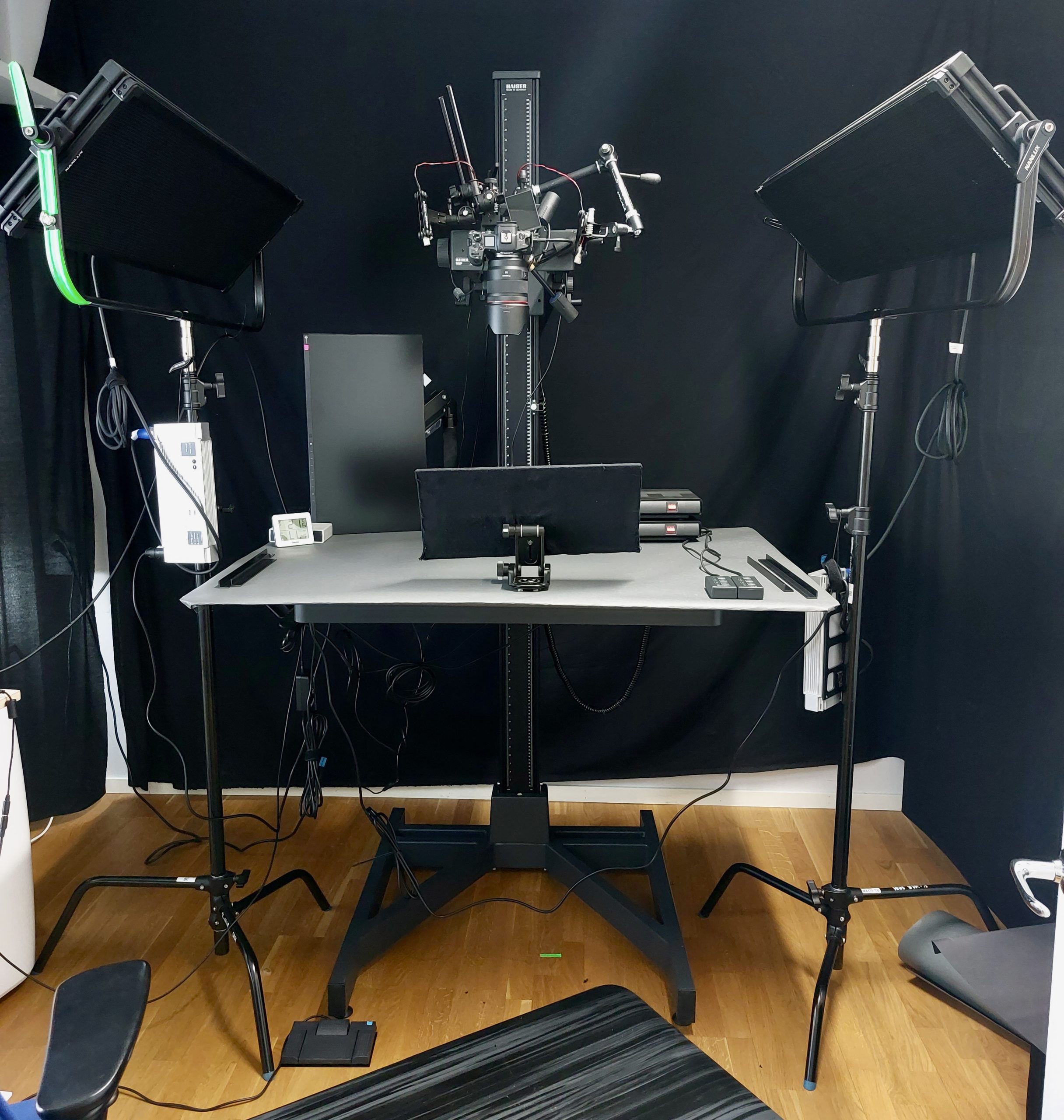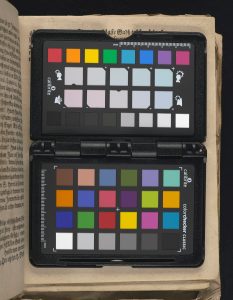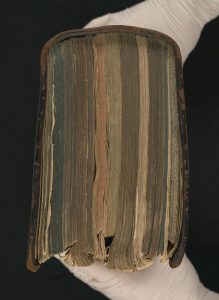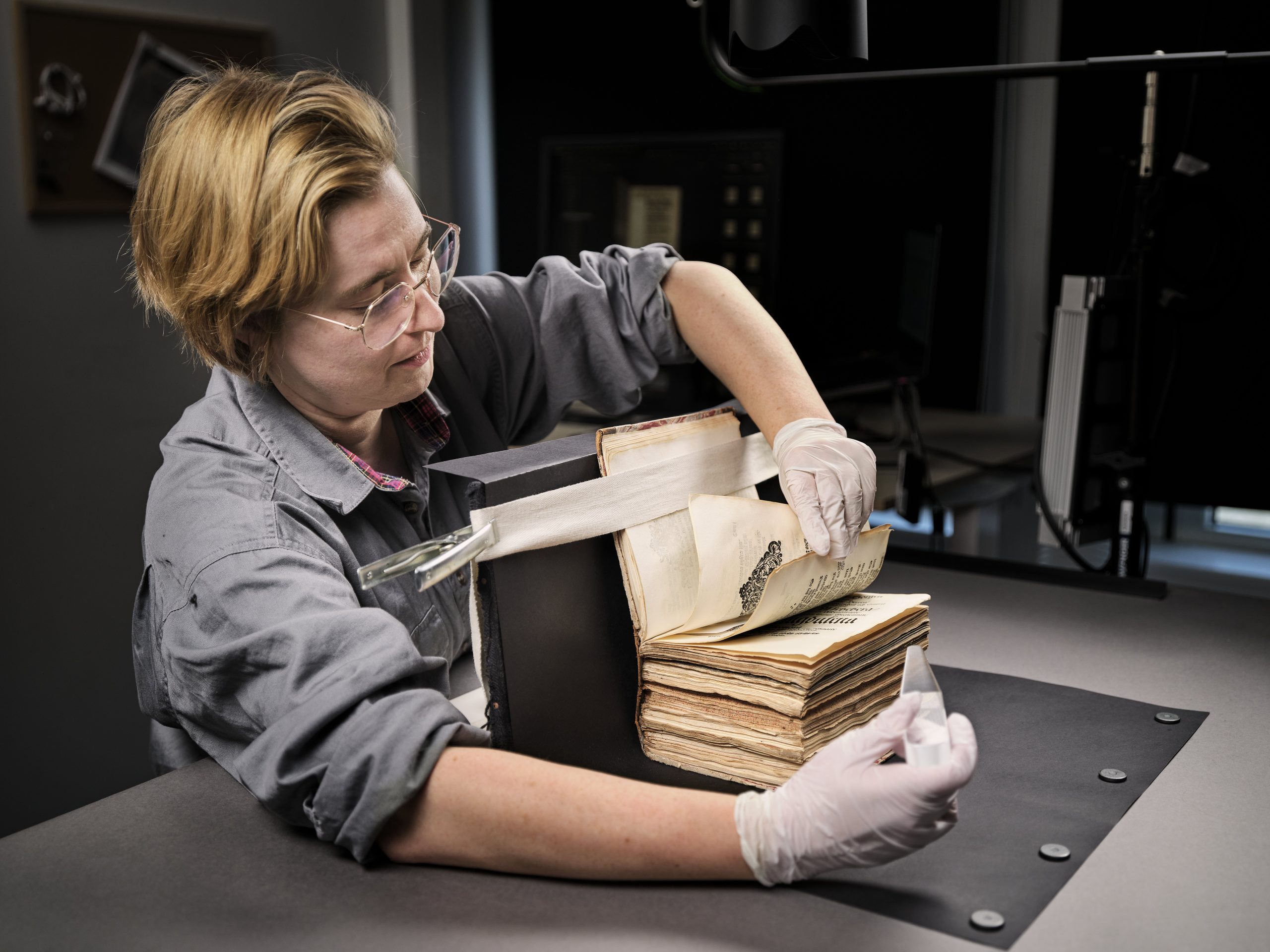
Digitizing funeral sermons from the library of Skokloster Castle
In a back corner office of the museum storage, there is a little office where we photograph books. Some are big, some are small, all are old, and many are fragile, leaving behind little paper flecks on every surface they touch. They smell like dust and old basements and they look like the kind of thing a rich old man would collect – which is exactly what they are.
Thanks to a generous endowment from the Riksbankens Jubileumsfond we have been able to start digitizing a collection of 400-year-old funeral sermons from the Skokloster Castle Library. This means carefully photographing each of the pages, uploading them to Search the collections, archive and then using machine reading software to turn the dramatic letters of the engraver’s block into the familiar letters of a computer screen.
Setting up a studio
But first we have to photograph them. In a perfect world, we could just plop them in a book scanner and scan away to our heart’s content, but these books are thick and frail: they just won’t fit and they might fall apart! So instead, we have a photography studio set up just for them. With a camera pointed down, and two lights on either side, the book sits in the spotlight like supermodel posing for Vogue. One cover of the book is held against a wooden brace as we photograph each volume from top to bottom, and then flip it over to photograph it from bottom to top.

CC BY Rosemary Hanson
These are museum-quality photos that we are going to use for machine reading, so we need to make sure that they are as accurate as possible. A good quality camera gives us high resolution so we can zoom in close to see all the little details. But we also need to make sure that the color of the image is as accurate as possible – and this is a little more difficult.
Correcting the color
 Different types of lights give you different types of color – something we have all experienced at least once on a zoom call. Under the lights, the book may look a little too yellow or blue, but our eyes and our brains automatically correct that color for us. We have a hard time knowing if the color is right or not. So, we need to make a special filter to give us the true color of the book.
Different types of lights give you different types of color – something we have all experienced at least once on a zoom call. Under the lights, the book may look a little too yellow or blue, but our eyes and our brains automatically correct that color for us. We have a hard time knowing if the color is right or not. So, we need to make a special filter to give us the true color of the book.
To do this, we take a photograph of a color card. Each color on this card is a known color: I know that this green square is forest green and that red square is fire engine red. So, when I show it to our color calibration software, that software can look at each of these colors and see if they are right or wrong: this army green should be forest green and this brick red should be fire engine red. Knowing that, it can produce a type of filter called an icc profile that will adjust the colors back to where they should be.

Books and lasers
 But we can’t stop there. These books are thick – if I am photographing the book from top to bottom, the top page might be nearly 30 cm from the bottom page! Because the heights are so different, the light will hit each page at a different angle and change the color reflected. An icc profile made at 0cm will be the wrong one at 15cm and our pages will look too red or too green! Disaster!
But we can’t stop there. These books are thick – if I am photographing the book from top to bottom, the top page might be nearly 30 cm from the bottom page! Because the heights are so different, the light will hit each page at a different angle and change the color reflected. An icc profile made at 0cm will be the wrong one at 15cm and our pages will look too red or too green! Disaster!
To fix this, we use lasers. It sounds very sci-fi, but the application is very simple. Two lasers sit on either side of our camera. When we photograph the color card, we move the lasers so that their beams touch precisely where the card is sitting. As we photograph the book, we move our table up and down so that the page is always at the height where the two lasers meet. If the two little laser dots are not touching on the page, we know that we are a little too low or a little too high and we adjust accordingly. This way, we can make sure that each page is always the same distance from our camera and our lights: the perfect placement to get the best color.
With a good camera, bright lights, a little software, and a lot of adjustments, we can produce digital images of these books that will last a long time. This extra effort now means that we can send these pictures to anyone who wants them and leave these old books unbothered in their library: no longer keeping their dusty secrets but sharing them with the whole world.

CC BY Helena Bonnevier
Written by imaging technician Rosemary Hanson.
Discover the digitized funeral sermons on Search the collections.